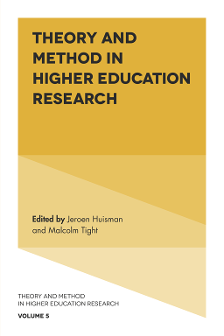
Index
Theory and Method in Higher Education Research
ISBN: 978-1-83867-842-5, eISBN: 978-1-83867-841-8
ISSN: 2056-3752
Publication date: 7 October 2019
Citation
(2019), "Index", Theory and Method in Higher Education Research (Theory and Method in Higher Education Research, Vol. 5), Emerald Publishing Limited, Leeds, pp. 225-232. https://doi.org/10.1108/S2056-375220190000005014
Publisher
:Emerald Publishing Limited
Copyright © 2019 Emerald Publishing Limited
INDEX
- Prelims
- Analysing Policy Positions of Stakeholder Organizations in Higher Education: What, How and Why?
- Understanding Disability Frameworks in Higher Education Research
- Diffracting the Curriculum: Putting “New” Material Feminism to Work to Reconfigure Knowledge-Making Practices in Undergraduate Higher Education
- The Looseness of Loose Coupling: The Use and Misuse of “Loose Coupling” in Higher Education Research
- Higher Education Leadership and Management as “Practical Reasonableness”: A Phronetic Approach to Higher Education Research
- Toward a Critical Whiteness Methodology: Challenging Whiteness through Qualitative Research
- Mixed Methods for Research into Higher Education: Solving the Problem of Institutionalized Introspection?
- Addressing Self-selection and Endogeneity in Higher Education Research
- An Exploration of Rhythms in the Contemporary Academy: Time, Space and Affect
- Pluralism as a Vehicle for Theory-building in Educational Technology Research
- Internet-mediated Research: A Methodological Discussion Based on a Study with Non-traditional Adult Students
- Ethnographies of Higher Education and Modes of Existence: Using Latour’s Philosophical Anthropology to Construct Faithful Accounts of Higher Education Practice
- Index